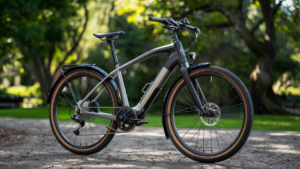There are various types of hydraulic jacks, such as bottle jacks, toe jacks, trolley jacks, and heavy equipment jacks. These jacks come in different sizes and shapes, each serving specific lifting purposes.
Hydraulic jacks operate using pressurized fluid to provide the necessary lifting force. Understanding the distinctions between these types of hydraulic jacks is crucial for selecting the right tool for the job. Let’s delve deeper into the functionalities, applications, and differences among these hydraulic jacks to make an informed choice based on your lifting needs.
Introduction To Hydraulic Jacks
Hydraulic jacks play a pivotal role in lifting heavy objects, thanks to their basic operating principle. These jacks use hydraulic fluid to generate force and lift heavy loads with ease. There are several types of hydraulic jacks, each designed for specific applications. The most common types include bottle jacks, toe jacks, trolley jacks, and heavy equipment jacks. Each type has its own unique features and benefits, making them suitable for various lifting requirements. Understanding the differences between these types of hydraulic jacks can help users choose the most appropriate jack for their specific needs.
Bottle Jacks
Bottle jacks are a type of hydraulic jack used for lifting heavy loads. They are compact, portable, and perfect for automotive and industrial applications. Bottle jacks provide excellent lifting capacity and stability for various tasks.
| Hydraulic jacks are versatile tools used for lifting heavy loads in various applications. Bottle jacks are compact and utilize hydraulic pressure to lift objects. They are commonly used in automotive repair shops and industrial settings. Design and functionality of bottle jacks allow for efficient lifting of vehicles and machinery. Suitable applications include changing tires, brake repairs, and general maintenance tasks. |
Floor Jacks
Hydraulic jacks come in various types, each serving specific purposes. Common types include bottle jacks, toe jacks, trolley jacks, and heavy equipment jacks. Trolley jacks offer a wider range of clearance, including a super low-profile minimum height, making them suitable for luxury and sports vehicles. On the other hand, a toe jack can tip heavy loads at an angle when used with a dolly system. These jacks are widely used in construction, car lifting, and heavy equipment maintenance due to their versatility and efficiency.
Scissor Jacks
Scissor Jacks: Hydraulic scissor jacks operate using a simple screw mechanism, with a lead screw that extends or retracts to lift or lower the jack. The compact design of scissor jacks makes them easy to store and transport. However, they have a limited lifting capacity compared to other types of jacks, making them more suitable for smaller vehicles and light-duty applications. Scissor jacks are commonly used as OEM equipment in many vehicles due to their compact size and ease of use.
Trolley Jacks
Hydraulic jacks come in various types, including bottle jacks, toe jacks, trolley jacks, and heavy equipment jacks. Trolley jacks offer a wider lifting range, ideal for low-profile vehicles compared to floor jacks. Each jack serves specific lifting needs efficiently and safely.
| Trolley Jacks |
| Structure and Mobility |
| Trolley jacks are designed with a rolling mechanism, allowing them to be easily maneuvered under vehicles. They typically feature a long handle and swivel casters, providing mobility for use in various locations. These jacks often come with a two-piece handle for convenient storage and a quick-release system for rapid lifting. |
| Preferred Usage Scenarios |
| The structure of trolley jacks enables them to be effectively used in garages, workshops, and even home environments. Their portability and ease of use make them suitable for tasks such as tire changes, brake repairs, and other maintenance activities. |

Toe Jacks
|
Toe Jacks: Unique Features: Toe jacks are designed for lifting heavy machinery and equipment with low clearance. When to Use a Toe Jack: Toe jacks are ideal for lifting loads in tight spaces or when precise positioning is required. |
Hydraulic Vs. Mechanical Jacks
Hydraulic vs. Mechanical Jacks
Operating Principles: Hydraulic jacks use the force created by compressing a liquid to lift heavy objects, while mechanical jacks rely on gears and screws. Hydraulic jacks work by pumping hydraulic fluid into a cylinder, causing a piston to move and lift the load. In contrast, mechanical jacks use threaded rods and gears to convert rotational force into linear force, raising the load.
Pros and Cons: Hydraulic jacks offer a smoother and more stable lifting motion, making them ideal for heavy loads. They also require less effort to operate. However, they are more complex and can be prone to oil leaks. On the other hand, mechanical jacks are simpler and more durable, but they require more physical effort to operate and may have a limited weight capacity.
High-lift Jacks
|
High-Lift Jacks
Specialized Lifting: High-lift jacks are designed for specialized lifting, such as off-road vehicles and agricultural equipment. They provide a high level of clearance, making them ideal for vehicles with larger tires or those operating in rugged terrain. |
Motorcycle Jacks
Explore various types of hydraulic jacks, including bottle jacks, toe jacks, trolley jacks, and heavy equipment jacks, each designed for specific lifting needs. These jacks offer versatility and efficiency for different applications, ensuring reliable lifting solutions for motorcycles and other vehicles.
There are various types of hydraulic jacks available in the market for different purposes. One of the popular types is motorcycle jacks, which are designed specifically for motorcycles. When selecting a motorcycle jack, it is important to consider factors such as weight capacity, lift height, and stability. Other types of hydraulic jacks include bottle jacks, scissor jacks, trolley jacks, and transmission jacks. Each type of jack is designed for a specific purpose, such as lifting heavy equipment or vehicles. It is important to choose the right type of hydraulic jack based on your specific needs and requirements. Furthermore, it is crucial to follow safety guidelines when using hydraulic jacks to prevent accidents and injuries.
Maintenance And Safety
|
Routine Checks: Regularly inspect the hydraulic jack for any signs of wear or damage. Look out for leaks, dents, or worn-out components and replace them immediately. Safe Operation Protocols: Always operate the jack on a flat, stable surface. Ensure proper placement and alignment before lifting any load. Use appropriate safety gear like gloves and goggles while handling the jack. |
Frequently Asked Questions
How Many Types Of Hydraulic Jacks Are There?
There are several types of hydraulic jacks designed for specific purposes, such as bottle jacks, toe jacks, trolley jacks, and heavy equipment jacks. Each of them comes in different shapes and sizes, providing a range of lifting heights and clearance.
The main difference between hydraulic and mechanical jacks is their operating principles, with hydraulic jacks using pressurized fluid and mechanical jacks relying on mechanical advantage.
What Is The Difference Between A Floor Jack And A Hydraulic Trolley Jack?
A floor jack has a horizontal lifting saddle and is more compact, while a hydraulic trolley jack has a vertical lifting saddle and is easier to maneuver.
What Is The Difference Between A Bottle Jack And A Toe Jack?
A bottle jack lifts vertically, while a toe jack can tip heavy loads at an angle using a dolly system.
What Is The Difference Between Mechanical And Hydraulic Bottle Jacks?
Hydraulic bottle jacks use pressurized fluid for lifting, while mechanical jacks rely on mechanical force.
Conclusion
Hydraulic jacks are versatile tools with various types like bottle jacks, toe jacks, trolley jacks, and heavy equipment jacks, each serving specific purposes. Understanding the differences between these types can help you choose the right one for your needs. Explore and utilize hydraulic jacks effectively.








